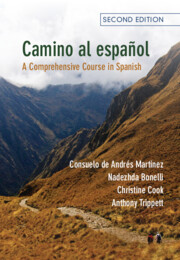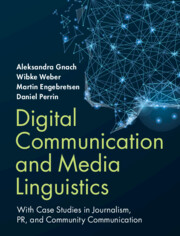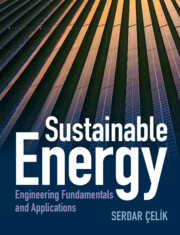Refine search
Actions for selected content:
36807 results in Cambridge Textbooks
15 - The Right to Education
-
-
- Book:
- Fundamental Rights
- Published online:
- 02 March 2023
- Print publication:
- 23 February 2023, pp 424-441
-
- Chapter
- Export citation
1 - Review: Dynamics of Single-Degree-of-Freedom Systems
-
- Book:
- Structural Dynamics
- Published online:
- 31 March 2023
- Print publication:
- 23 February 2023, pp 1-34
-
- Chapter
- Export citation
Contributors
-
- Book:
- Fundamental Rights
- Published online:
- 02 March 2023
- Print publication:
- 23 February 2023, pp xii-xii
-
- Chapter
- Export citation
7 - The Right to the Protection of Personal Data
-
-
- Book:
- Fundamental Rights
- Published online:
- 02 March 2023
- Print publication:
- 23 February 2023, pp 202-232
-
- Chapter
- Export citation
9 - Infiltration and Related Unsaturated Flows
- from Part III - Water Below the Surface
-
- Book:
- Hydrology
- Published online:
- 01 March 2023
- Print publication:
- 23 February 2023, pp 318-372
-
- Chapter
- Export citation
1 - Introduction
-
- Book:
- Hydrology
- Published online:
- 01 March 2023
- Print publication:
- 23 February 2023, pp 1-20
-
- Chapter
- Export citation
Appendix D - Pseudocode for Describing Algorithms
-
- Book:
- Structural Dynamics
- Published online:
- 31 March 2023
- Print publication:
- 23 February 2023, pp 554-556
-
- Chapter
- Export citation
Preface to Second Edition
-
- Book:
- Hydrology
- Published online:
- 01 March 2023
- Print publication:
- 23 February 2023, pp ix-x
-
- Chapter
- Export citation
3 - The Right to Freedom of Conscience, Thought, Belief and Religion
-
-
- Book:
- Fundamental Rights
- Published online:
- 02 March 2023
- Print publication:
- 23 February 2023, pp 53-80
-
- Chapter
- Export citation
Appendix C - Gaussian Quadrature
-
- Book:
- Structural Dynamics
- Published online:
- 31 March 2023
- Print publication:
- 23 February 2023, pp 551-553
-
- Chapter
- Export citation
13 - The Prohibition of Slavery, Servitude and Forced Labour
-
-
- Book:
- Fundamental Rights
- Published online:
- 02 March 2023
- Print publication:
- 23 February 2023, pp 389-407
-
- Chapter
- Export citation
Dedication
-
- Book:
- Structural Dynamics
- Published online:
- 31 March 2023
- Print publication:
- 23 February 2023, pp vii-viii
-
- Chapter
- Export citation
Index
-
- Book:
- Fundamental Rights
- Published online:
- 02 March 2023
- Print publication:
- 23 February 2023, pp 547-558
-
- Chapter
- Export citation

Camino al español
- A Comprehensive Course in Spanish
-
- Published online:
- 22 February 2023
- Print publication:
- 26 January 2023
-
- Textbook
- Export citation

Partnerships with Families and Communities
- Building Dynamic Relationships
-
- Published online:
- 21 February 2023
- Print publication:
- 17 February 2023
-
- Textbook
- Export citation

Digital Communication and Media Linguistics
- With Case Studies in Journalism, PR, and Community Communication
-
- Published online:
- 18 February 2023
- Print publication:
- 29 December 2022
-
- Textbook
- Export citation

Sustainable Energy
- Engineering Fundamentals and Applications
-
- Published online:
- 17 February 2023
- Print publication:
- 19 January 2023
-
- Textbook
- Export citation

Inference and Learning from Data
- Foundations
-
- Published online:
- 17 February 2023
- Print publication:
- 22 December 2022
-
- Textbook
- Export citation
Contents
-
- Book:
- Partnerships with Families and Communities
- Published online:
- 21 February 2023
- Print publication:
- 17 February 2023, pp v-vii
-
- Chapter
- Export citation
Chapter 1 - Exploring partnerships with families and communities
-
- Book:
- Partnerships with Families and Communities
- Published online:
- 21 February 2023
- Print publication:
- 17 February 2023, pp 1-27
-
- Chapter
- Export citation
